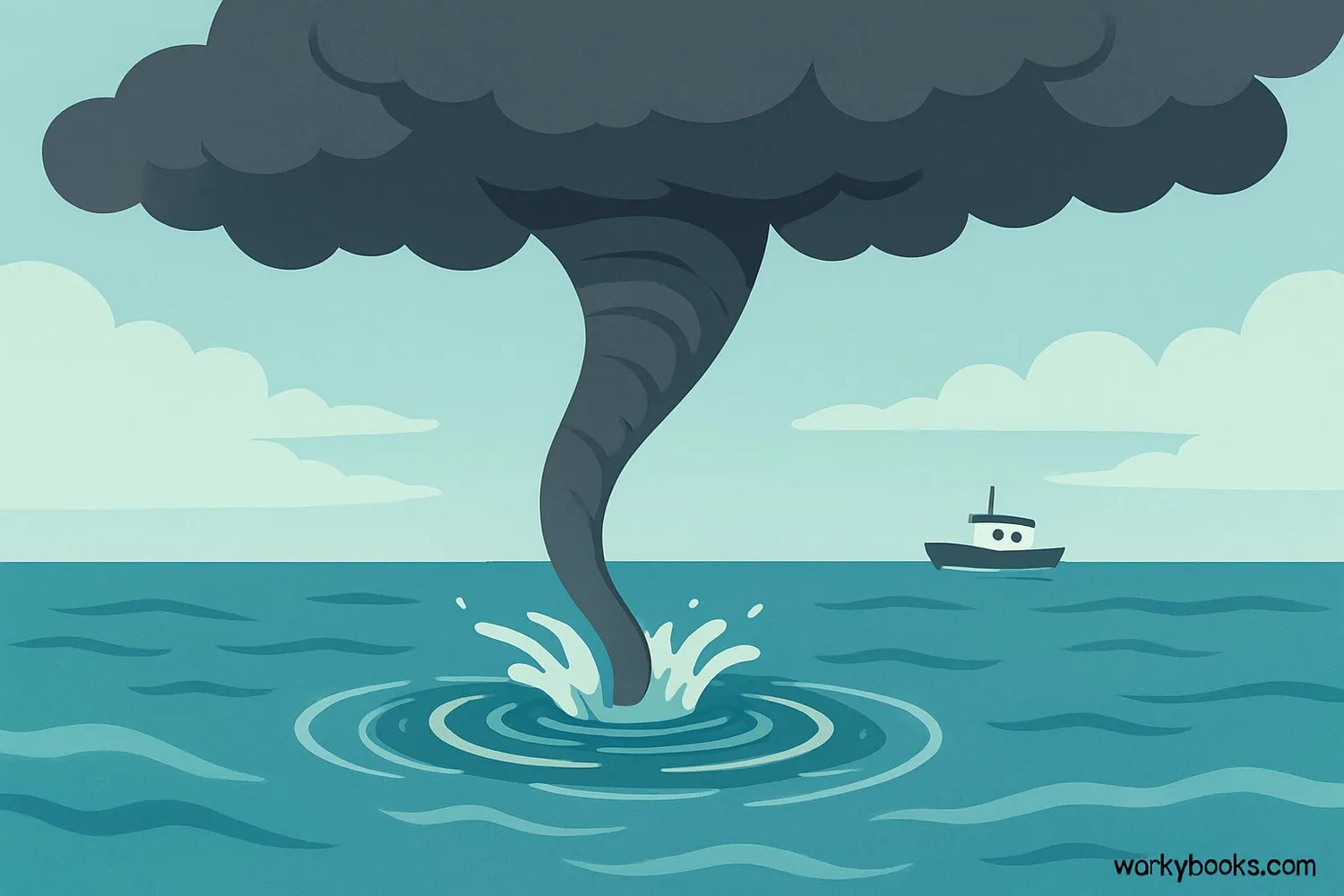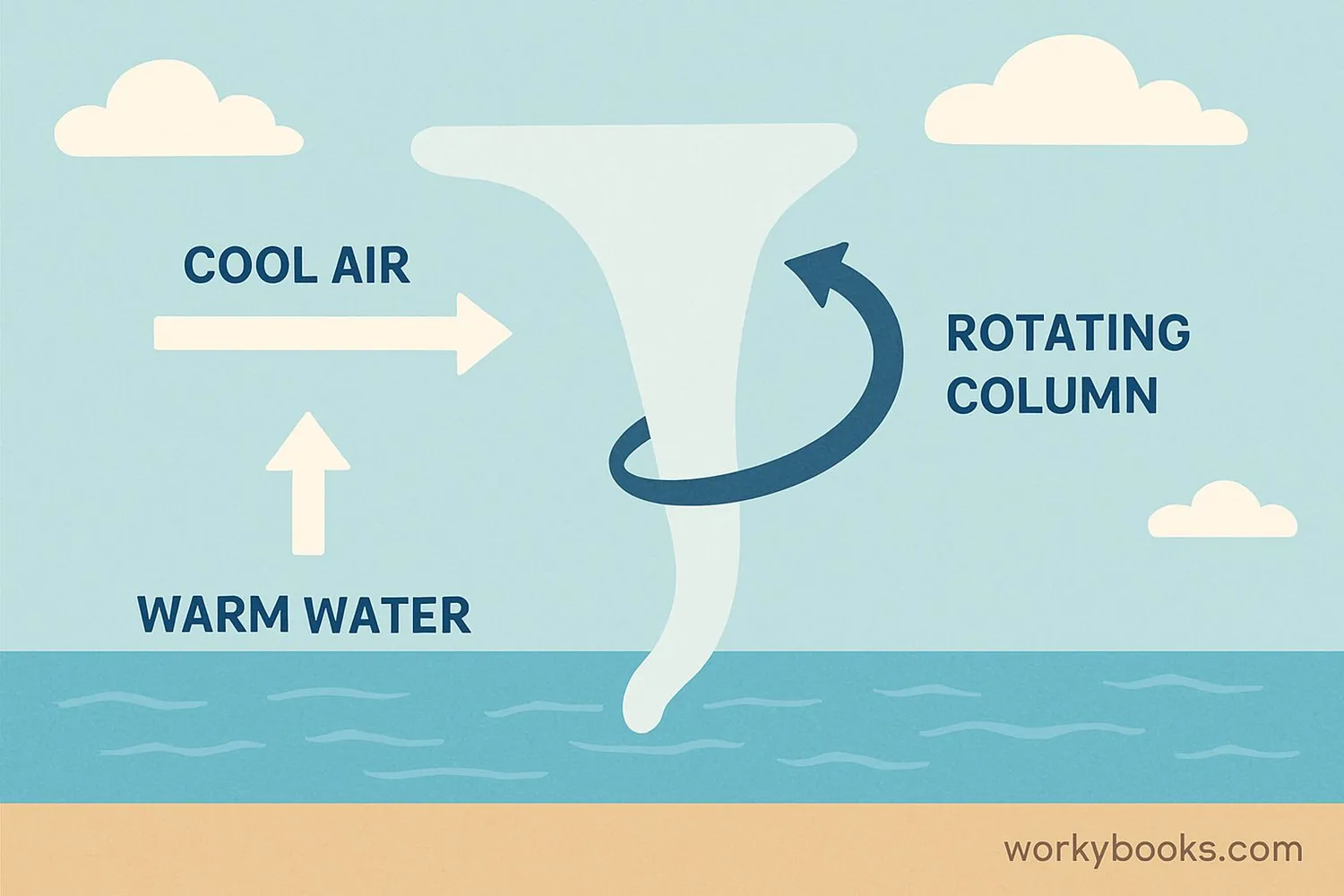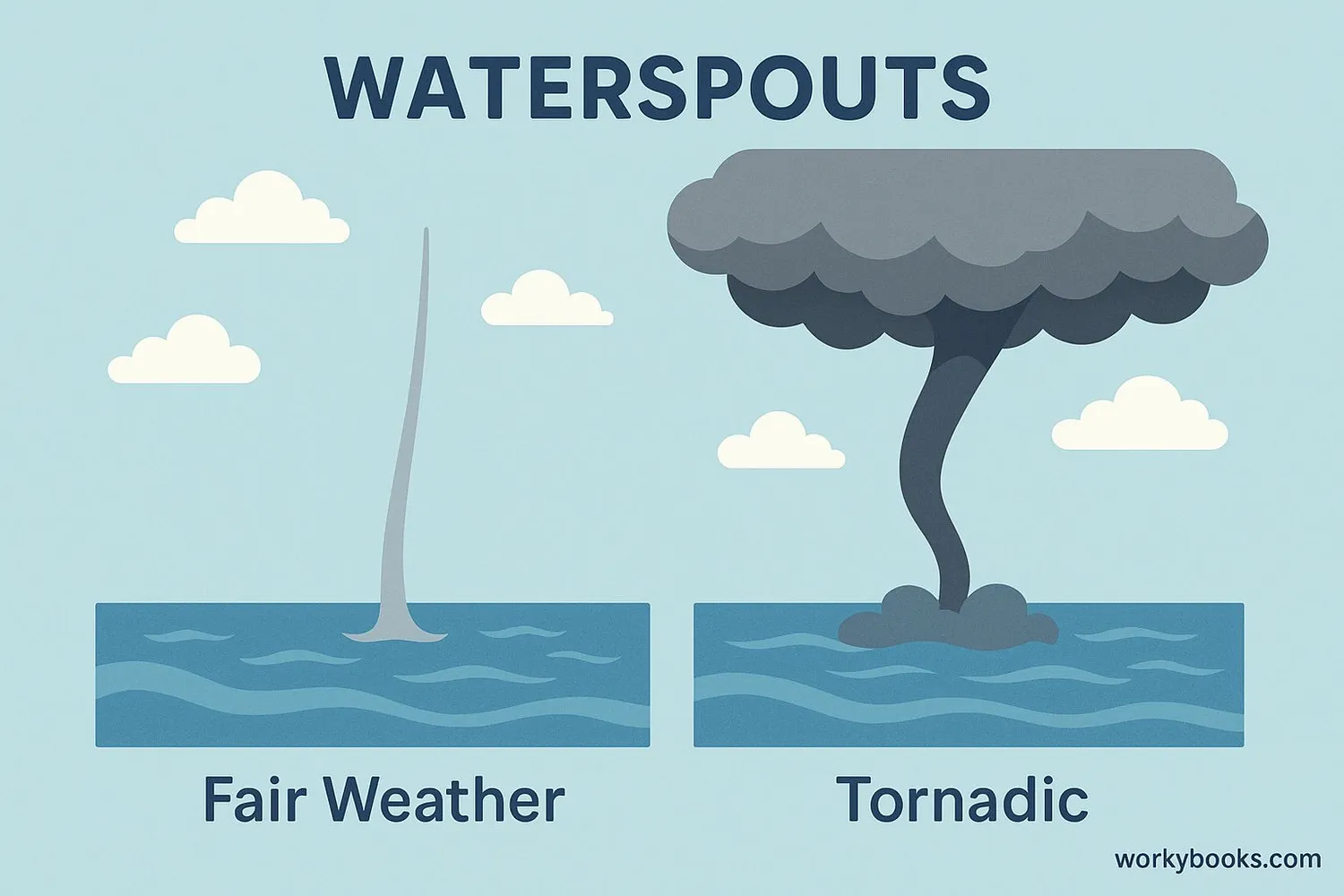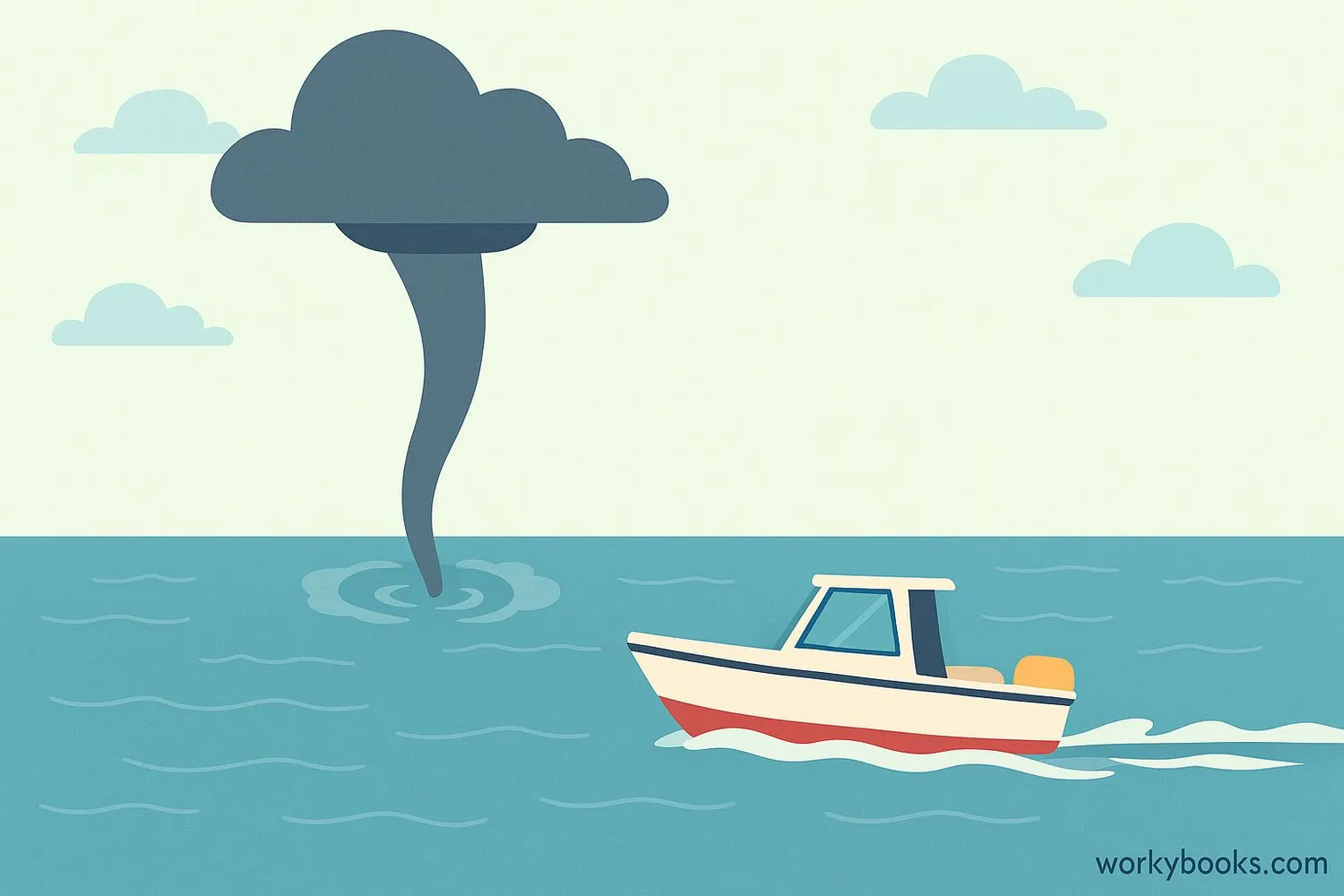Waterspouts - Definition, Examples, Quiz, FAQ, Trivia
Discover how tornadoes form over water and how they work!
What is a Waterspout?

A waterspout is a spinning column of air that forms over water. It looks like a tornado but happens over lakes, rivers, or oceans. Waterspouts can be just as powerful as tornadoes and create dramatic funnel-shaped clouds that connect the water surface to the clouds above.
Waterspouts are fascinating weather phenomena that occur when cool air moves over warm water. They form spinning columns that suck up water, creating a "water tornado." While they might look scary, most waterspouts are weaker than tornadoes and don't last very long.
Science Fact!
Waterspouts can occur anywhere in the world where warm water and cool air meet!
How Waterspouts Form

Waterspouts form when warm water heats the air just above it, causing the air to rise. Cooler air then rushes in to take its place, creating a spinning motion. This process requires specific weather conditions:
Warm Water
Water needs to be warm to heat the air above it
Cool Air
Cooler air moves over the warm water surface
Wind Patterns
Winds blowing in different directions create rotation
Rising Air
Warm, moist air rises and begins to spin
Funnel Forms
A visible funnel extends from clouds to water
The entire process can take just 10-20 minutes. Waterspouts typically form beneath developing cumulus clouds when winds at different heights blow at different speeds or directions, causing the air to rotate.
Weather Observation!
Most waterspouts last only 2-20 minutes, but some can continue for up to an hour!
Types of Waterspouts

Meteorologists recognize two main types of waterspouts:
Fair Weather Waterspouts
Form in light wind conditions, usually along developing cumulus clouds. They start at the water surface and work upward.
Tornadic Waterspouts
Form during severe thunderstorms and start from the clouds downward. These can be more dangerous.
The differences between these two types:
Fair Weather Waterspouts:
• Usually weaker
• Form in fair weather
• Last 10-20 minutes
• Move slowly
Tornadic Waterspouts:
• Can be as strong as tornadoes
• Form during thunderstorms
• Can last longer
• Move with the storm system
Waterspout Safety Tips

Waterspouts can be dangerous to boats and people near the water. Here's what to do if you see a waterspout:
Watch the Sky
Look for dark, flat bases with developing funnel clouds
Boat Safety
Move at right angles to the waterspout's path
Shore Safety
Seek shelter indoors away from windows
Important safety guidelines:
• Never try to get closer to a waterspout for photos
• Waterspouts can move onto land and become tornadoes
• Listen for weather warnings on marine radios
• If you see a waterspout, report it to local authorities
Remember!
Waterspouts can produce winds of 50-150 mph - strong enough to capsize small boats!
Waterspout Quiz
Test your waterspout knowledge with this weather quiz! Answer all 5 questions to see how much you've learned.
Frequently Asked Questions
Here are answers to some common questions about waterspouts:
Fun Waterspout Trivia
Discover some amazing facts about waterspouts!
Size Matters
Waterspouts can be enormous! The largest recorded waterspout had a diameter of nearly 300 feet and reached heights of over 3,000 feet!
Fishy Business
Waterspouts sometimes lift fish and other marine creatures from the water! This explains why it sometimes "rains fish" in coastal areas after a waterspout passes.
Historical Sightings
Christopher Columbus reported seeing waterspouts during his voyages to the Americas. He described them as "swirling columns that drank the sea."
Winter Waterspouts
Waterspouts can form over cold water too! "Winter waterspouts" occur when very cold air moves over relatively warmer water, such as the Great Lakes in late fall.





